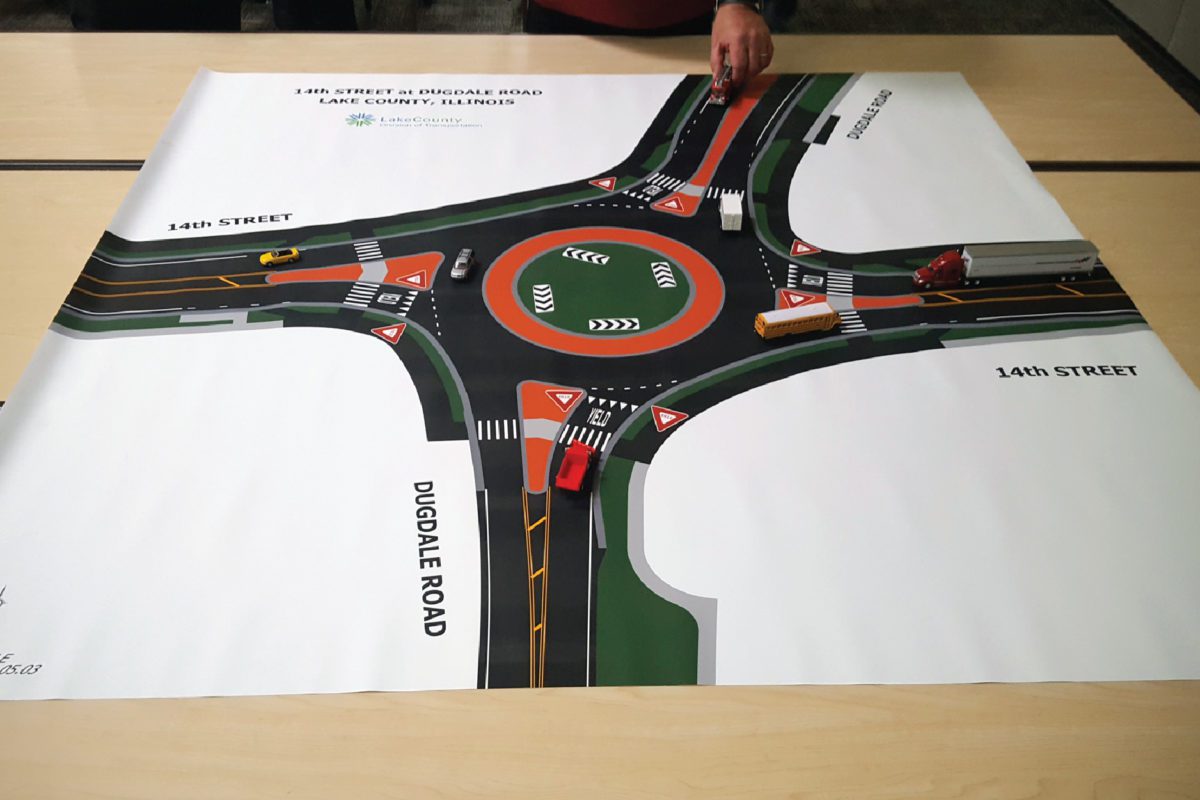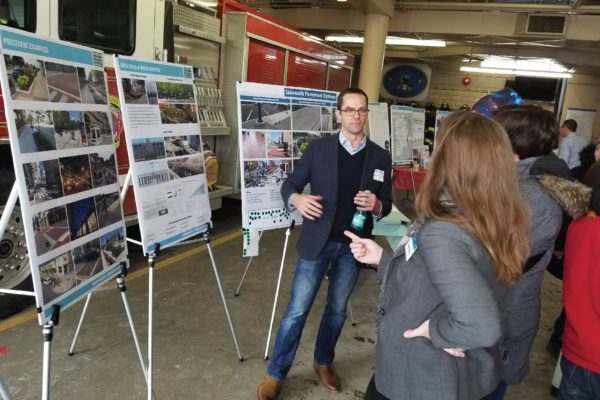
Public involvement efforts during Phase I are usually a requirement for federal funding or to gain approval under a federal process such as the National Environmental Policy Act (NEPA) or Section 4(f) of the U.S. Department of Transportation Act for use of public park space and historic properties. Civiltech attributes our successes with Phase I Public Involvement meetings to two differentiators.
Public Involvement in Environmental and Design Studies
First, Civiltech brings presentations with a high level of graphic design that clearly illustrate complex engineering ideas making them easily understandable. Our graphic designers and Phase I team are experts at taking the planning and engineering jargon and making it understandable to the lay person. This is important not only to ensure that people understand the process and the design recommendations,but to facilitate our ability to gain meaningful input from the public and illustrate that the input has
been incorporated.
Secondly, Civiltech brings outstanding staffing to public involvement events. Our team prides itself in being approachable with technical staff that excels at engaging the public. Having friendly, knowledgeable, grounded, and unflappable staff provides a comfort level for the public and can help diffuse a crowd that may approach a project with negativity. In many instances, we also present a multi-disciplinary team providing the ability for a team member to defer to another for their expertise.
A successful public involvement campaign is a stepping stone to a successful project. Through Phase I public involvement, we need to give good information, dispel misinformation, and define and build consensus. Our team also works to have a good understanding of the key stakeholders from the onset and create a method of engagement that is best for that community.
A notable public involvement strategy was Civiltech’s work on the Jackson Park Mobility Project. With a strong understanding of the requirements for the many federal processes needed to move the project forward, the Civiltech team was able to quickly pivot at the beginning of Covid restrictions to an appropriate and meaningful virtual public engagement strategy that checked all of the boxes, such as correct notifications, ads, and accessibility. A one-size-fits-all virtual meeting would not suffice. With a clear understanding of all stakeholders and thinking outside of the box, the team created a dynamic campaign that included components such as televised meetings for nursing home residents, telephone access for community members with no internet, subtitles on all media for the audibly impaired, and audible flyers for the visually impaired, as well as traditional physical flyers.

Another creative strategy was a tool used during a public meeting on Civiltech’s 14th Street Phase I study. One of the recommended design solutions included a roundabout. Ourston Roundabout Engineering, the project’s roundabout design subconsultant, developed an entertaining activity allowing the community to practice navigating the roundabout. A model of the design was printed on a mat, and the public could drive various types of vehicles through the roundabout.
For the Elmhurst Bike and Pedestrian Plan Update, the Civiltech planning team created a story map which supplemented a virtual public workshop and online survey. The story map was an online app that allowed the public to virtually walk through the recommendations.
Public Involvement in Design Engineering
Public involvement doesn’t stop at Phase I. Our Phase II Design Engineering team is also involved in stakeholder engagement. Phase II public involvement is typically on projects that include a Phase I and II overlap or a public meeting near the end of design to inform people of how the construction is going to affect them. It’s not always specifically about the design. As an example, construction access for those with special needs are raised oftentimes and addressed during this engagement.
Phase II public meetings tend to not be a requirement for any type of process, but instead are more of a courtesy and an opportunity to provide information to the impacted stakeholders. On locally-funded projects, a Phase II public meeting may be the first opportunity the community has to see and learn about the design. Much of a Phase II public meeting involves listening to individuals and discussing concerns for their specific properties and interests. The design team recognizes this as an important step to learn if there are any concerns that can be addressed with a design adjustment within the established scope.

As in Phase I, our Phase II team brings strong graphical presentations that illustrate designs in understandable terms. Also, our team brings knowledgeable and approachable staff ready to truly listen to the community. An example is a recent project that involved the removal of a large tree in the public way as part of a roadway improvement. An elderly woman who since childhood had lived in her home on a lot next to the tree was greatly concerned about the planned removal of the tree. Our engineers listened. The plans and proposed realignment were modified allowing the tree to remain.
Public Involvement in Construction Engineering
Public involvement campaigns are generally not requirements when providing Phase III Construction Engineering. However, at Civiltech, it’s a service we offer and excel at. For our larger agency clients, public meetings are usually not required as the project has been robustly presented during Phase I. For Phase III, public meetings tend to be used more often in municipality and county projects.
The primary purpose of a public meeting in Phase III is to let stakeholders know what to expect during construction. Our team comes prepared with plans in hand making our staff available to the public. While the team may sometimes give a presentation, the biggest impact comes from allowing the public to meet and speak with the Resident Engineer, giving them one-on-one explanations of what they can expect and exactly when and how it will affect them. While Phase I public involvement collects public input and presents design recommendations, and Phase II public involvement shares overall design information, a Phase III public meeting gets down to the minutia of the public’s interest. This can touch on anything impacted by construction – access, garbage collection, inconvenience, etc.

Our Phase III team understands the importance of being honest with the public. Through open communication and understandable graphics, the team can show that while some of the construction may seem miserable, the end product will truly be a meaningful improvement, not only for the community as a whole, but for individual property owners as well.
An effective public involvement campaign can result in community members being advocates for the project. Our Phase III staff understands that it is good to engage the “sidewalk supervisor” – the neighbor that is keeping his eye on everything. Our R.E.’s work hard to keep these critical stakeholders engaged as they can be an asset to the project. One example was a gentleman on a recent large roadway improvement. Civiltech’s engagement with this man resulted in him having a great enthusiasm for the project. He then actively advocated to the neighbors on behalf of the project.
On all phases of a project and for all purposes behind a public involvement campaign, Civiltech brings outstanding graphic capabilities to clearly illustrate conditions and friendly, knowledgeable, and approachable staff to engage the stakeholders. Most importantly, our teams never lose sight of the needs of end user – the people impacted by our projects.
